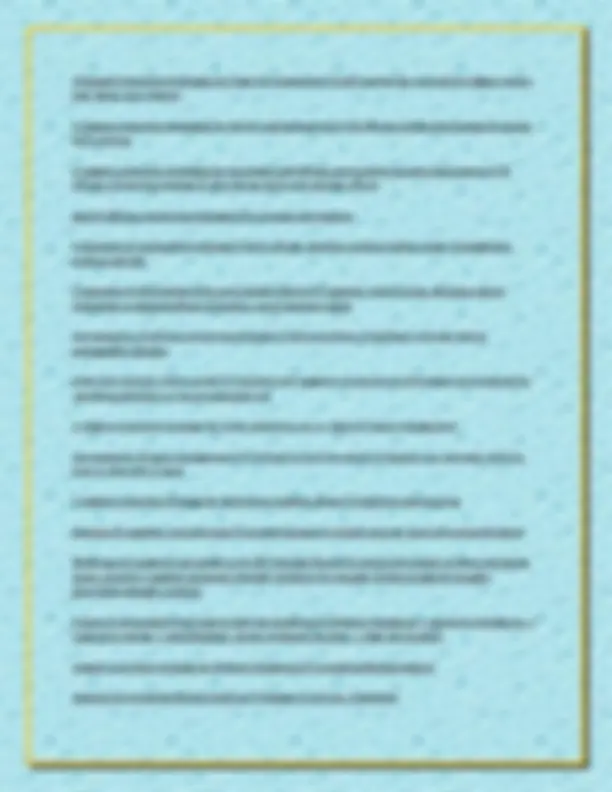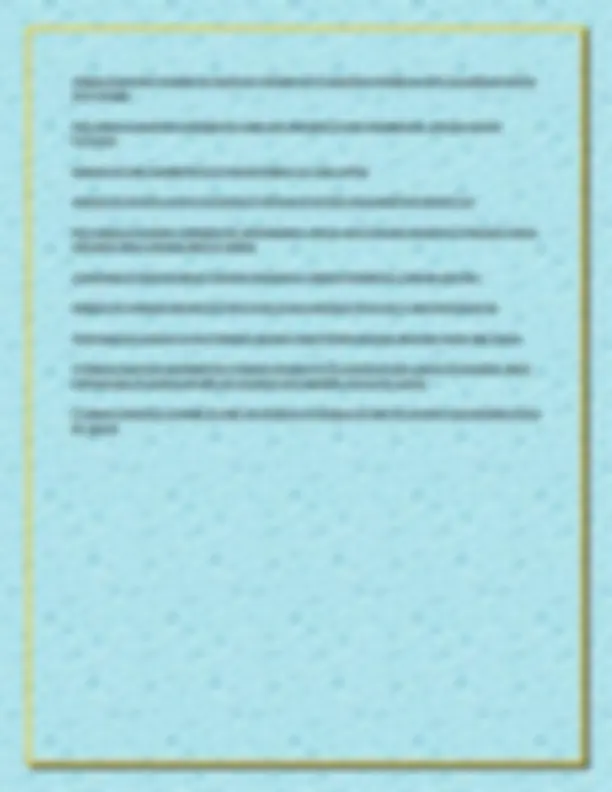




Study with the several resources on Docsity

Earn points by helping other students or get them with a premium plan


Prepare for your exams
Study with the several resources on Docsity

Earn points to download
Earn points by helping other students or get them with a premium plan
Community
Ask the community for help and clear up your study doubts
Discover the best universities in your country according to Docsity users
Free resources
Download our free guides on studying techniques, anxiety management strategies, and thesis advice from Docsity tutors
Chapter 7: Relapse Prevention & Social Support
Typology: Exercises
1 / 4

This page cannot be seen from the preview
Don't miss anything!



Chapter 7: Relapse Prevention & Social Support
Act of eating is often✔✔a social activity with the client's social environment having a significant impact.
Social Support✔✔Family, friends, distant support buddy, club or organization, social support groups, Group classes
The benefits of having social support for making lifestyle changes?✔✔The positive effects of social support on health is that clients perceive a sense of support from others leading to a feeling of a more generalized sense of control. A greater sense of control often results in an increase in self efficacy.
Relapse Prevention✔✔systematic approach to maintaining a behavior change involving the identification of and preparation for high-risk situations
What are the 4 Immediate Determinants of a relapse?✔✔1. High-risk situations, 2. A person's lack of coping skills, 3. Overly positive outcome expectancies, and 4. Negative reaction to a lapse.
High Risk Situation✔✔Negative emotional stress, Interpersonal conflict, Social pressure, Positive emotional states
Coping Skills✔✔ability to cope with difficulty
Positive Outcome Expectations✔✔previous pleasurable experiences associated with foods and the significance of those perceptions can add to the desire to lapse.
Reaction to Lapse✔✔lapse is a single act but relapse is series of lapses
Covert Antecedent✔✔Not obvious factors like irreverent decisions, lifestyle imbalances, urges/cravings
Four covert antecedents of a relapse✔✔1. Apparently Irrelevant Decisions, 2. Stress Level, 3. Cognitions,
Apparently Irrelevant Decisions (AIDs)✔✔A series of seemingly harmless decisions can provide a conduit for a relapse. For example, buying a bag of potato chips for the "children" or a bag of cookies "in case guests stop by" creates conditions that can bring an individual to the brink of a relapse.
Stress Level✔✔A person experiencing a high degree of stress is automatically generating negative emotional states, thereby creating high-risk situations (see Exhibit 7.5). In addition, there is an increased desire to relapse and connect to the satisfying emotional states with previous unhealthy eating pleasures.
Cognitions✔✔Cognitive factors such as rationalization and denial set the stage for a relapse. For example, "I deserve a whole batch of brownies after this rejection." Here rationalization that the indulgence is justified adds to the creation of a relapsing environment.
Urges and Cravings✔✔The desire for immediate gratification can take the forms of urges, sudden impulses to indulge, or cravings, subjective desires to experience the effects of an indulgence.
PSYCH 489 Exam 3: Relapse Prevention Techniques Relapse is very common in three disorders (in the order of highest relapse rate to lowest)✔✔substance abuse > depression > panic disorder w/o agoraphobia
Relapse in the Black-and-White Model✔✔any use of substance is considered a relapse b/c client could be under either total abstinence or total relapse.
Relapse in Cognitive-Behavioral Model✔✔falling back to pre-treatment levels of use
Lapse in Cognitive-Behavioral Model✔✔single instance of use
Relapse Prevention is what type of treatment?✔✔cognitive-behavioral treatment
Relapse prevention helps to prevent two things✔✔occurrence of initial lapse; any lapse from escalating into a full-blown relapse
What is loss of control hypothesis✔✔1 drink means you are drunk
is loss of control hypothesis accurate?✔✔no
What is Drunken Comportment?✔✔Alcohol's influence is due to pharmacological effects only
Modification to Drunken Comportment✔✔Alcohol's influence is due to pharmacological effects and expectancy effects
Overview of Relapse Prevention Model - Effective coping response (4 steps)✔✔Negative/positive emotion; interpersonal conflict; social pressure (= high risk situation) -> effective coping response -> increased self-efficacy -> decreased probability of relpase
Overview of Relapse Prevention Model - Ineffective coping response (6 steps)✔✔Negative/positive emotion; interpersonal conflict; social pressure (= high risk situation) -> ineffective coping response -> decreased self-efficacy; positive outcome expectancy for effects of alcohol -> lapse -> abstinence violation effect -> increased probability of relpase
relapse prevention strategy for desire for indulgence✔✔substitute indulgence with recreational activity and massage
two relapse prevention strategies for urges and cravings✔✔urge management; stimulus control technique
example of urge management✔✔coping imagery e.g. urge surfing
example of stimulus control tecniques✔✔removal of all items associated with alcohol use
two relapse prevention strategies for rationalization, denial, and irrelevant decisions✔✔decision matrix; education about warning signs of relapse
3 examples of warning signs✔✔positive expectancy; lifestyle imbalance; irrelevant decision
example of irrelevant decision✔✔client tries to buy a bottle of drink just in case friend stops by
three types of junctions in the irrelevant decision map✔✔early warning; alternate route; last chance
3 relapse prevention strategies for irrelevant decision✔✔1) revised decision matrix 2) education about warning signs 3) analysis of high-risk situations and available choices for coping
1 relapse prevention strategy for high risk situation✔✔analysis of high-risk situation and available choice for coping